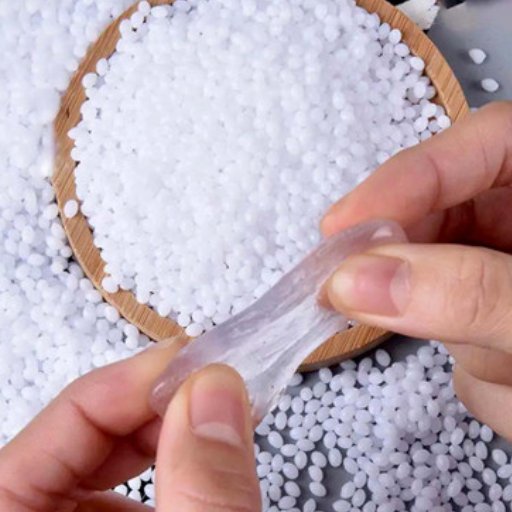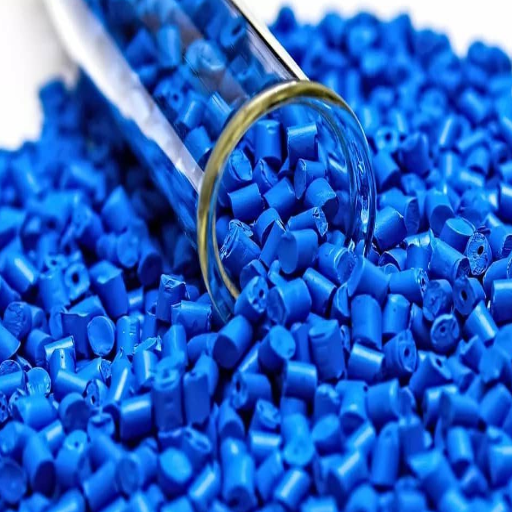Polyphenylene oxide (PPO) plastics are distinct among engineering materials for striking a remarkable balance between performance, durability, and thermal stability. Their use is critical across multiple industries, from automotive to electronics, due to these thermoplastic polymers with unique characteristics. But what is a PPO, and what has made it a favorite among manufacturers worldwide? This article explains the science of PPO plastics, elucidating their composition, advantages, and some applications that demonstrate their various uses. You are a materials engineer or interested in advanced plastics; this article will explain the details of why Polyphenylene Oxide is a material that merits attention.
What are the Key Properties of PPO Plastic?
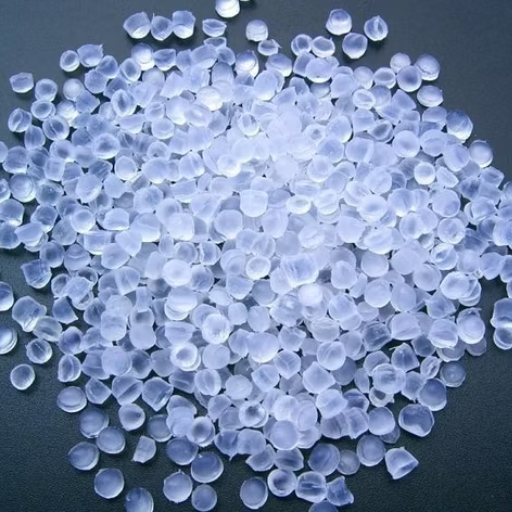
PPO plastic, or Polyphenylene Oxide, is known for its remarkable combination of properties that make it a preferred material in various industries. Its key properties include:
- High Thermal Stability: PPO maintains its structural integrity and performance at elevated temperatures, making it suitable for applications requiring heat resistance.
- Dimensional Stability: It exhibits minimal expansion or contraction, ensuring consistent performance in precise and demanding applications.
- Excellent Electrical Insulation: PPO has strong electrical insulating properties, making it ideal for use in electronic components and electrical systems.
- Low Moisture Absorption: The material resists water absorption, preventing degradation or changes in performance due to moisture.
- High Strength and Stiffness: PPO offers superior mechanical strength and rigidity, even under heavy loads or stresses.
- Chemical Resistance: It withstands exposure to a wide range of chemicals, including acids and bases, enhancing its durability in harsh environments.
These combined qualities make PPO plastic a highly versatile and reliable material across multiple industries.
Understanding Dimensional Stability in PPO
In PPO (Polyphenylene Oxide), dimensional stability is greatly determined by its low moisture absorption rate coupled with its thermal properties. One of the most striking features of PPO is its resistance to water uptake, mitigating the chances of swelling or dimensional changes in high-humidity conditions. In addition, the polymer’s high glass transition temperature ensures its cross-linked structure withstands elevated thermal conditions without significant distortion and preserves equilibrium under prolonged heat exposure, thus minimizing deformation due to heat.
When combined with reinforcing materials like glass fibers, PPO exhibits further improvement in dimensional stability, with reduced shrinkage and increased stiffness. This makes it ideal for use in automotive parts, electrical enclosures, and other high-end engineering applications where precise measurement and constant exposure to various environments are required. Material research provides evidence of the low coefficient of thermal expansion (CTE) of the modified PPO grades, indicating that a consistent and controlled change in size with temperature will be maintained, thus reinforcing its reputation as a dependable thermal engineering plastic for precision manufacturing.
Heat Resistance and Thermal Stability of PPO
Polyphenylene Oxide (PPO) possesses exceptional heat resistance and thermal stability due to its highly stable aromatic polymer structure. Its glass transition temperature, usually expressed as Tg, falls between 210°C and 230°C, indicating the temperature range at which it retains mechanical strength while showing little distortion in shape under severe heat. Moreover, PPO also demonstrates extraordinary thermal oxidative stability, with its decomposition onset temperature in inert environments exceeding 500°C. This unrivaled trait of PPO makes it suitable for uses such as automotive parts designed to fit under the hood or industrial machines that require constant exposure to high temperatures. Also, modified PPO grades, which are usually copolymerized with polystyrene, have greater processability, easier precision molding, and enhanced heat resistance. Suggested these attributes, alongside documents on thermal performance, offer engineers a strong and dependable material that withstands extreme temperatures.
Electrical Insulation Properties of PPO
Polyphenylene Oxide (PPO) is primarily used in the electrical and electronic industries because of its exceptional electrical insulation properties. Additionally, its low dielectric constant and dissipation factor across frequencies enhance the reduction of energy loss. PPO also has high volume resistivity and surface resistivity, which ensures its ability to withstand electrical current leakage under severe conditions. These characteristics remain stable even at high temperatures, allowing them to be used in high-voltage and other sophisticated electronic appliances. Moreover, the hydrolytic stability of PPO protects it from degrading in humid environments, guaranteeing reliable long-term performance in insulation systems. These features, combined, demonstrate why Polyphenylene oxide is used in modern electrical engineering, which is constantly seeking greater performance and enhanced durability.
What are the Applications of PPO Plastic?
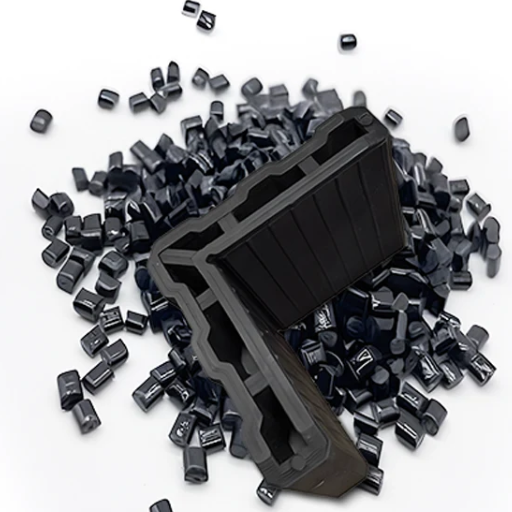
PPO plastic is widely used in various industries due to its excellent thermal resistance, electrical insulation properties, and durability. Common applications include:
- Electrical and Electronic Components: Used in circuit boards, connectors, and insulating parts due to their stability under high voltages and heat resistance.
- Automotive Industry: Found in components such as housings, pump parts, and cooling system elements, where strength and heat resistance are necessary.
- Industrial Equipment: Utilized in gears, valves, and other mechanical parts subjected to wear and high temperatures.
- Consumer Goods: Used in kitchenware and appliance housings because of its strength and resistance to moisture and chemicals.
These applications highlight PPO’s versatility and reliability in demanding environments.
PPO in the Automotive Industry
The lightweight, durable, and heat-resistant characteristics of Polyphenylene Oxide (PPO) are essential for advancing automotive engineering technologies. Intake manifolds, fuse boxes, and battery enclosures are some of the newer automotive components for which PPO is being utilized. Due to its exceptional thermal stability and low moisture absorption, it is suitable for engine compartments and electrical systems that are subjected to intense heat and harsh conditions. Moreover, it can be compounded with other materials, which increase impact resistance and cost efficiency to help reduce weight, thus improving the industry’s fuel efficiency standards. Its good precision molding capability also broadens its use in sophisticated automotive parts as it ensures reliable operation and durability over many years.
Use of PPO in Electrical Components
PPO’s remarkable insulating qualities and structural stability make it one of the most valuable thermoplastics used for electrical components. Its low dielectric constant, paired with a high dielectric strength, allows it to be used for applications with minimal need for electrical interference. It is often used in circuit boards, connectors, and insulation parts. PPO’s reliability makes it fit for operation under varying thermal and ambient conditions. It can withstand high temperatures and moisture, thereby minimizing the risks of electrical failure due to conduction or corrosion. PPO’s flame-retardant properties also enhance the safety of electrical systems without adding excessive amounts of chemical flame retardants, helping to meet UL 94 and V-0 standards. A strong electrical systems manufacturer, with ease, as precision fabrication capabilities enable the creation of compact, high-density assemblies, optimizing modern electrical designs.
Applications in Engineering and Manufacturing
PPO’s distinctive properties allow me to incorporate it in diverse engineering and manufacturing applications. Its thermal stability and electrical insulating properties make it perfect for manufacturing connectors, housings, and even circuit boards in the electronics industry. Also, I can incorporate it into automotive and industrial parts due to chemical and flame retarding characteristics of PPO which allows compliance to safety and durability specifications. Moreover, effortlessly designed and precisely fabricated components will enable me to resolve modern engineering issues by constructing intricate high-performance systems.
How is PPO Plastic Processed through Injection Molding?

Achieving high-quality parts from PPO plastic requires precise procedures in injection molding. First, the raw material needs to be dried, since inhaling moisture can damage PPO’s hydrophilic properties. In addition, the specific grade of PPO determines the temperature it will be heated to, with a typical range of 250°C to 300 °C.
The required specification is filled by the design of the mold cavity containing the molten PPO. It is injected under high pressure so the material fills the mold evenly, and the chances of voids and warping are minimal. The rate and pressure also need to be monitored for optimal caliper. After forming the part, the mold is held at the set temperature to ensure proper cooling and solidification. Once cooled, the part is ejected and inspected before being subjected to any necessary post-processing. These techniques reduce error and improve uniformity. It is for this reason that material sustains grit and stress due to demanding PPO applications.
Overview of PPO Injection Molding Techniques
The injection molding of PPO has seen improvements from novel materials science as well as sophisticated process control systems. One improvement is the addition of Computer-Aided Engineering (CAE) techniques for evaluating mold filling. Careful prediction of flow or thermal imbalances can be corrected with an optimal mold design before production, thanks to computer-aided engineering (CAE) tools. Furthermore, multi-zone temperature controllers enhance defect suppression and improve stability in the mold dimensions by providing precise control of thermal allocation within the mold.
Defect suppression and stability in dimensional precision for the mold are also achieved with special purpose screw and barrel geometries which improve the melting and mixing process of the PPO resins. As a step toward greener practices, many companies now use closed-loop systems, which reclaim waste materials to streamline material usage during production. In addition, systems that monitor parameters in real-time, such as injection pressure, cycle time, and cooling rates, using IoT technologies enable strict adherence to quality thresholds at every stage of production. These modifications improve efficiency and product quality, which ensures the injection molding of PPO is reliable across many industries.
Benefits of Using PPO Resin in Injection Molding
An advantage I have noticed while using PPO resin in injection molding processes is its remarkable thermal stability, which helps the material sustain high temperatures without deformation. Moreover, PPO’s outstanding dimensional stability and low moisture absorption guarantee consistent part performance in highly stressful situations. Its intrinsic flame retardancy is also beneficial because it suppresses the need for extra additives, further simplifying compliance with safety regulations. Lastly, the material’s chemical resistance is an asset, alongside its high strength-to-weight ratio, when creating lightweight components for multiple applications.
Considerations for Machine Settings in PPO Processing
When working with polyphenylene oxide (PPO) resin, it is essential to pay special attention to the machining parameters and adjust them to the material’s specific thermal and mechanical properties. The processing temperatures and injection speeds need to be tightly controlled due to the high melting point and glass transition temperature of the PPO resin, which typically range from 200°C to 260°C. Heating within this range is convective, and if too low, it can lead to material degradation. Too low heating may also cause material degradation. In this case, the material’s flow will be hindered. The screw’s barrel temps in an injection molding machine should be kept at lower limits. At the same time, the nozzle temperature can be set high to prevent material from solidifying in the front section of the screw.
Shear rates affect PPO processing because excessive shear stresses could damage the material’s polymer architecture, decreasing its mechanical performance. Shear stress can be reduced by Moderate screw speeds and avoiding sharp transitions within screw geometry. Moreover, mold temperatures should be kept within the range of 80°C and 120°C so that the cooling phase is effective and the surface of the final product is smooth and finished to a high standard. Monitoring back pressure is also essential to ensure consistent melt uniformity.
For precise tolerances and reliable productive outcomes, the recommended injection pressure settings need to be higher due to the increased viscosity of PPO relative to other thermoplastics. Setting dynamic process parameters with real-time control and making adjustments as required can further improve processing efficiency and product quality.
What Makes PPO a High-Performance Thermoplastic?
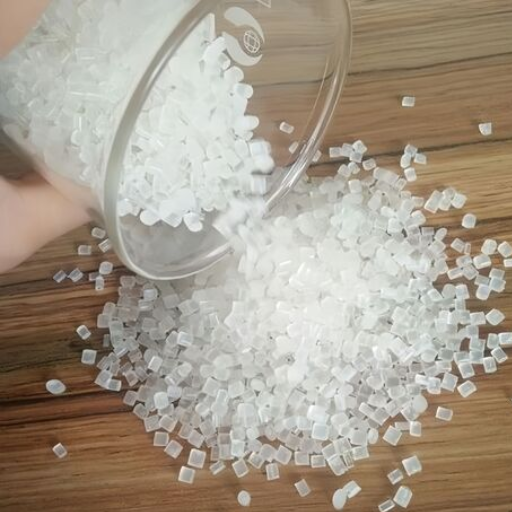
Due to its phenomenal mechanical, thermal, and electric properties, Polyphenylene Oxide (PPO) is regarded as a high-performance thermoplastic. It is appropriate for demanding applications because it offers high dimensional stability, superb resistance to heat and chemicals, and low moisture absorption. In addition, PPO has outstanding electrical insulating properties, which make it extensively used in the automobile, electrical, and industrial industries. Its high strength-to-weight ratio further increases its applicability across different engineering fields.
Comparing PPO with Other Engineering Plastics
Polyphenylene oxide (PPO) possesses a unique combination of attributes when pitted against other engineering plastics, offering a competitive advantage for specific applications. For example, PPO has greater heat resistance compared to polycarbonate (PC), making it preferable for use in applications that involve prolonged high temperatures. Furthermore, its lower moisture absorption compared to nylon (polyamides), which tends to absorb water significantly, potentially compromising dimensional stability in humid environments, gives it an advantage.
PPO is superior to acrylonitrile butadiene styrene (ABS) in the electric insulation properties, which adds value in parts like connectors and housings in electrical systems. In chemical resistance inspection, PPO also outperforms polyester-based engineering plastics like polyethylene terephthalate (PET) or polybutylene terephthalate (PBT) in countering acid and alkali attacks and is thermally treated. Moreover, PPO blended with polystyrene (HIPS) produced alloys have further increased impact strength and become favorable for more commercial and industrial applications.
Although the positive attributes of a high strength-to-weight ratio are presented with PPO, its price per ton makes it less approachable compared to other plastics, such as polypropylene (PP), especially in cost-sensitive applications. For PPO’s competitive edge as an engineering plastic, these precision parts have to endure extensive mechanical loads and require thermal stability along with moderate endurance, which makes the enclosure stand out above the rest.
Impact Strength and Chemical Resistance of PPO
Polyphenylene Oxide (PPO) has an incredible impact strength, which determines its practicality for use in harsh applications. PPO exhibits remarkable resistance to impact at both low and high temperatures and preserves its structure during sudden mechanical loads. Therefore, it is applicable in the manufacture of automotive parts, electrical equipment, and other components that bear significant mechanical loading.
Furthermore, PPO is unrivaled in its chemical resistance, especially when it comes to water-based solutions, acids, and alkalis. It does not break down when exposed to most industrial chemicals, which makes the material suitable for use in harsh environments. It should also be noted that PPO can be sensitive to some organic solvents and high-concentration hydrocarbons over time. These features must be considered when assessing compatibility with specific chemical constituents. It is possible to improve the application range of PPO by incorporating it into polymer blends with polystyrene or nylon, while still maintaining its resistance and mechanical strength. Such properties make PPO useful in various industries, including automotive, electronics, and chemical processing.
What are the Advantages of Glass Filled PPO?
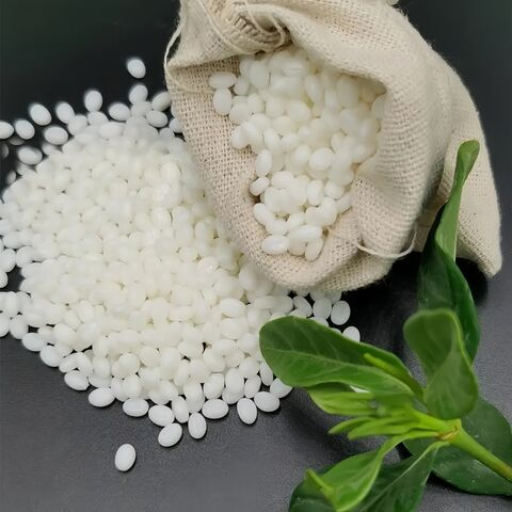
Glass-filled PPO offers several significant advantages, making it a preferred material in demanding applications:
- Enhanced Strength and Stiffness: The addition of glass fibers significantly improves the mechanical properties of PPO, providing higher tensile strength and rigidity compared to unfilled PPO.
- Improved Dimensional Stability: Glass filling reduces the thermal expansion of PPO, ensuring stable dimensions even under temperature variations.
- Superior Thermal Resistance: This composite can withstand higher temperatures without deforming, making it suitable for high-heat environments.
- Excellent Electrical Insulation: Glass-filled PPO retains the base material’s outstanding electrical insulation properties, making it ideal for use in electronic components.
- Chemical Resistance: It exhibits strong resistance to various chemicals, allowing it to be used in harsh environments.
These characteristics collectively enhance the material’s performance in industries such as automotive, aerospace, and electrical engineering.
Enhancing Mechanical Properties with Glass Fiber
The mechanical properties of specific polymers, such as Polyphenylene Oxide (PPO), are significantly enhanced by glass fiber reinforcement, making them suitable for demanding structural applications. The incorporation of glass fiber increases the tensile strength and flexural strength of the glass by adding structural support to the polymer matrix. For example, the tensile strength of glass-filled PPO is shown to increase by as much as 70% depending on the percentage of fiber content utilized.
In addition, the inclusion of glass fibers enhances both wear resistance and stability under load, maintaining consistent operational capability even with prolonged axial loads. This is important in fields where components operate under dynamic loads or high pressures, such as the automotive and aerospace industries. The added fiber also diminishes the rate of creep deformation, ensuring dependability in the composite with long-term stress in long-term loading parts.
Moreover, more refined methods of processing, such as injection molding with fiber alignment control, allow for the precise tailoring of directional strength in specific parts for particular needs. If molded and formulated well, glass-filled polymers possess a critical combination of low weight and high mechanical characteristics, an essential consideration when addressing modern engineering problems and requirements.
Impact on Dimensional Stability and Strength
When compared to unfilled polymers, glass-filled polymers exhibit heightened strength properties along with improved dimensional stability. This is because the glass fibers decrease thermal expansion and shrinkage, which helps components retain exact geometric tolerances in diverse situations. For example, glass-filled polymers have a significantly reduced coefficient of thermal expansion (CTE)—often measured between 10 and 40 ppm/°C, depending on the fiber and matrix materials—which is especially beneficial for components that require high precision or undergo temperature changes. In addition, specific grades show tensile strengths above 200 MPa, with some exceeding 200 MPa. These remarkable changes meet the need for glass-filled polymers in applications that require strict stability and mechanical strength, such as in automotive housings, industrial machine parts, and consumer electronics.
Reference Sources
1. A Review of the Polymer for Cryogenic Application: Methods, Mechanisms and Perspectives
- Key Findings: This study explores the use of polymers, including PPO (polyphenylene oxide), in cryogenic applications. It highlights the mechanical and thermal properties of PPO-based composites, emphasizing their potential in aerospace and energy sectors. The research also discusses modifying PPO with nanomaterials, such as graphene and carbon nanotubes, to enhance its cryogenic performance.
- Methodology: The study reviews existing literature on thermoset and thermoplastic polymers, with a focus on their cryogenic properties. It evaluates the effects of various modifiers on PPO’s mechanical and thermal performance.
- Key Findings: This paper examines the potential of converting plastic waste, including PPO plastics, into pyrolytic oil through thermal cracking. It highlights the environmental benefits of reducing plastic waste and the feasibility of using pyrolytic oil as an alternative fuel.
- Methodology: The study reviews the pyrolysis process, focusing on the types of plastics suitable for conversion, reactor designs, and the quality of the resulting pyrolytic oil. It also discusses the challenges and opportunities in scaling up this technology.
- Key Findings: This research examines the use of plastic oil derived from polypropylene (PPO) plastics as a fuel blend in diesel engines. It finds that blending plastic oil with biodiesel improves engine performance and reduces emissions under optimized injection timings.
- Methodology: The study involves experimental testing of diesel engines using various blends of plastic oil, biodiesel, and diesel. It evaluates engine performance, combustion characteristics, and emission levels at different injection timings.
Frequently Asked Questions
Q: What is polyphenylene oxide, and how is it used in plastic materials?
A: Polyphenylene oxide (PPO) is a high-performance engineering thermoplastic known for its excellent dimensional stability and low moisture absorption. It is widely used in various applications, including electrical components, automotive parts, and industrial machinery, due to its desirable properties.
Q: What are the key properties of PPO material?
A: PPO material exhibits high heat resistance, excellent electrical insulating properties, and low water absorption. Its dielectric properties make it suitable for use in electrical applications where insulation is crucial.
Q: How does PPO plastic material compare to other plastics like polystyrene and polyamide?
A: PPO plastic material offers superior high heat resistance and lower moisture absorption compared to polystyrene, while also providing better electrical insulating properties than polyamide. This makes PPO a preferred choice in high-performance applications.
Q: What is modified polyphenylene oxide, and why is it important?
A: Modified polyphenylene oxide refers to PPO that has been chemically altered to enhance specific properties, such as impact resistance or processability. This modification enables greater versatility in applications and improves performance in various environments.
Q: What are the typical processing methods for PPO, such as injection molding or extrusion?
A: PPO can be processed using standard methods, such as injection molding and extrusion. These methods enable the efficient production of complex shapes and components while preserving the material’s excellent properties.
Q: What are the electrical properties of PPO and its significance in engineering thermoplastics?
A: PPO exhibits excellent electrical insulating properties, making it ideal for electrical applications. Its dielectric properties ensure reliable performance in electronic devices, contributing to safety and efficiency in various engineering applications.
Q: Can you explain the term “low moisture absorption” to PPO?
A: Low moisture absorption refers to the ability of PPO to resist water uptake, which is crucial in maintaining its mechanical and electrical properties. This characteristic makes PPO suitable for applications in humid environments.
Q: How does Emco Industrial Plastics utilize PPO in its products?
A: Emco Industrial Plastics uses PPO in various applications due to its excellent dimensional stability and high-performance characteristics. The company offers products that leverage the benefits of PPO for industries requiring reliable and durable materials.
Q: What is the glass transition temperature of PPO, and its relevance?
A: The glass transition temperature of PPO is a critical factor that influences its mechanical properties and thermal performance. Understanding this temperature helps in material selection for applications that experience temperature fluctuations.
Q: Is PPO susceptible to oxidative degradation, and how does it affect its use?
A: Yes, PPO is susceptible to oxidative degradation, which can impact its long-term performance. Proper stabilization techniques and formulations are used to mitigate this effect, ensuring the material’s reliability in various applications.


